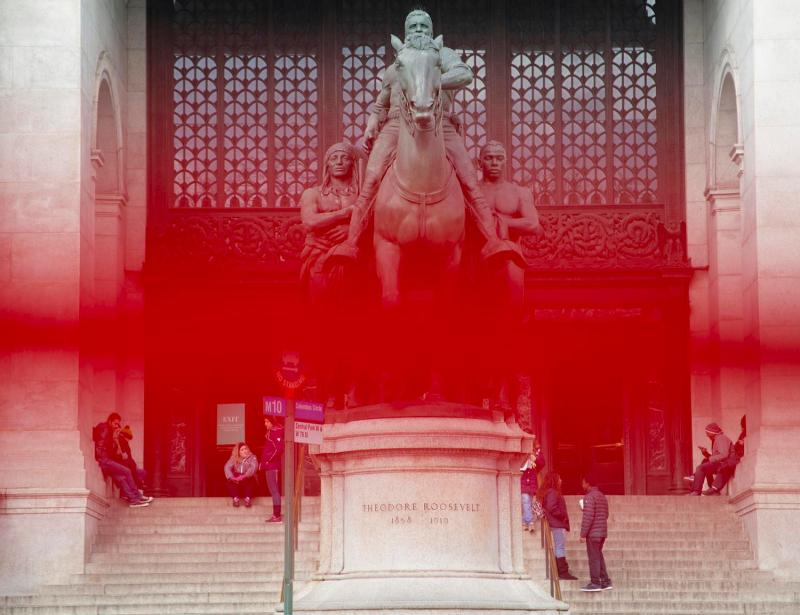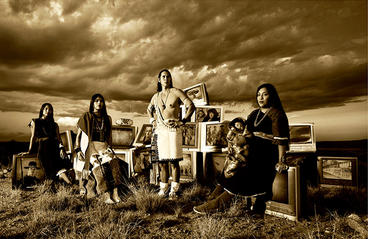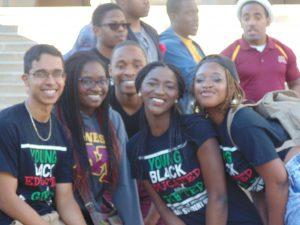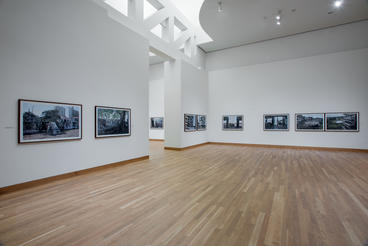
FEATURED ESSAY
New York City’s American Museum of Natural History is the stuff of wonders. Filled wall to wall with countless dioramas, statues, and artifacts that are sure to jog the imagination, it is no wonder that the museum attracts five million visitors a year. The vast majority of those visitors pass through the building’s Central Park West entrance, which, for nearly 80 years, has featured a monument dedicated to Theodore Roosevelt. The monument, unveiled in 1940, is flanked by two stone staircases and framed by the building’s grandiose marble façade.
Teddy Roosevelt: the pioneering conservationist and antitrust champion; the fabled character that falls across the pages of history textbooks and the silver screen alike. One may recall the 2006 movie Night at the Museum, in which Ben Stiller’s character (Larry, a guard at the American Museum of Natural History) befriends a wax figure of a noble Teddy Roosevelt that comes alive after museum hours. Larry works together with Roosevelt and other museum residents to save the museum from impending doom. It may seem silly to analyze a children’s movie, however, this depiction of T.R. reinforces the narrative of the benevolent, heroic man revered in American culture. In short, he is an American legend—but to whom? After all, Roosevelt also harbored backward views relating to racial superiority. In fact, the work he did to create America’s national parks and forests was only made possible by forcing countless Native Americans out of their homelands.[1]
Anyone aware of this complex history may rightfully feel a plethora of emotions when passing by the Theodore Roosevelt monument. To make matters more complicated, the statue in question depicts not only Roosevelt, but two others as well: a Black man and a Native American man. Roosevelt is seated on a horse, while the two men walk beside him. The positioning creates a hierarchy between the three and seems to imply that the former president is guiding the others in a fashion that smacks of white saviorism. Notably, the statue was crafted by James Earle Fraser (1876-1953). Fraser, who spent his early years in Minnesota and South Dakota, was somewhat familiar with Great Plains Indians. This likely inspired his depiction of the man in the statue—yet the subject's regalia is a mismatched conglomeration of Native cultures.[2] The African man’s portrayal is hardly different. His shield, very similar to those in Maasai designs, is incongruous with his hairstyle and facial scarification.[3] These inaccuracies show little cultural sensitivity, which contributes to misunderstanding on the part of the non-Africans and non-Natives who view it.
The Museum of Natural History produced an exhibition in 2019 giving more context to the provenance of the sculpture while acknowledging its controversy. It also took responsibility for its own part in promoting offensive racial stereotypes, which included hosting two conferences on eugenics in 1921 and 1932.[4] In June 2020, a commission led by the City of New York made the decision to remove the statue from its current location and in June 2021, the New York City Public Design Commission voted unanimously to relocate the statue through a long-term loan to publicly accessible grounds at a cultural institution dedicated to the life and legacy Roosevelt.[5] The New York Times noted that a home institution has yet to be designated and that discussion about the future of the statue is still ongoing.[6] In early October 2021, protestors covered the statue in red paint ahead of Indigenous Peoples Day, in a manner similar to a 2017 protest. [7]
The museum and the commission are not alone in their response to the Roosevelt memorial. In 2018, photographer and New York City resident Nona Faustine created Contested as an intervention in the statue’s narrative and history. In the digital photograph, the head-on framing makes visible all three men in triad formation against the backdrop of the cavernous museum entrance. Scattered around are people engaging in daily life: sitting, talking, and walking by; appearing like miniatures next to the statue’s towering size. The image is transformed, made unusual, by a stark, fuzzy, blood-red line bisecting it. The division, which blurs out the lower halves of the men and horse, gives the impression that something is deeply wrong—that there is something we ought to rethink about this place. Just as we do not see the whole picture clearly, so too does white America struggle to focus on its own fraught past. Faustine challenges Roosevelt’s legacy, but this is far from the sole focus of her lens.
The scope of Faustine’s subject matter reaches beyond New York City, also including high-profile monuments in Washington D.C., Monticello, and Charlottesville. Her critical lens and contributions to photography expose historical injustices in America. The works challenge the viewer to reflect on the following questions:
What does it mean when some of this country’s most famous, historical, and “American” sites gloss over violent histories? Who is lauded, and why? Displayed separately or together, these works are an expression of disenchantment with an oft-told version of American history: one that chooses to dismiss our country’s failings to treat people of color with dignity.
—
UMN Art History student Jenna Gustafson reached out to Faustine on behalf of the Weisman Art Museum, where the artist detailed her views on the future of the statue and the national conversation surrounding these types of monuments:
WAM: In the summer of 2020, the City of New York announced that the Theodore Roosevelt statue would be removed from the steps of the Museum of Natural History, although it remains to be seen where it will end up. What is your perspective on this change?
Faustine: It's up to the people to make that decision. If the consensus is to remove the statue, then I'm fine with it. I do believe the Roosevelt statue should be perhaps moved somewhere else and recontextualized or amended. This is a great teachable moment—to address why this statue is offensive. I would like to see a group of historians, scholars, and artists who will make recommendations about many of these statues and new ones to come. That will address the inequality, racism, and sexism (so many of these statues are of white men.) The country Ghana, in Africa, has recently announced they are doing just that and I think that's the way to go.
WAM: Contested was made in 2018. Between then and now, what differences do you see in the conversations surrounding these statues? Has your own thinking about the monuments changed as a result of making this series?
Faustine: [The] My Country series began in 2016. Contested was made in 2018. The momentum has definitely picked up around these statues. This summer [2020] the protests brought it front and center. People are examining more the history of this country and their role in it. I believe, although still reluctant, many [people] are coming to more of an understanding about how racism and hatred are embedded in the very fabric of our country right down to our monuments, which has brought us to this moment of reckoning. I think artists have been pointing to this for some time, including scholars and writers. Now it has come up on the radar of the average American and how it has shaped the atmosphere of inequality we see today. My views have not changed since making the series...well maybe slightly—I don't think every statue has to be ripped down, because Americans have a short memory. We definitely should be thinking of how to amend or recontextualize some of them so that present and future Americans understand the past, otherwise risk the danger of repeating it.
—
On the whole, the issue of contested monuments is not a local or regional issue, but rather a national one. The heated exchanges over the monuments raise a variety of viewpoints: some defend their placement, citing their historical significance. Others argue that these statues erase the harm enacted against people of color. Many offer up ways to recontextualize them, such as adding an information plaque or moving them to museums. The solutions to address these troubled sites are many, but there is only one bottom line: something must change. From the walls of the gallery to the streets of our cities, Nona Faustine asks us to reconsider who we celebrate and what is possible when we do so.
References:
[1] https://www.amnh.org/exhibitions/addressing-the-theodore-roosevelt-statue/today
[2] Ibid.
[3] Ibid.
[4] https://www.amnh.org/exhibitions/addressing-the-theodore-roosevelt-statue/making-the-statue
[5] https://www.cnn.com/2021/06/24/us/theodore-roosevelt-statue-new-york-trnd/index.html
[6] https://www.nytimes.com/2021/06/22/arts/design/theodore-roosevelt-statue-museum-natural-history-removal.html
[7] https://news.artnet.com/art-world/art-industry-news-october-7-2017938
Jenna Gustafson graduated from the University of Minnesota with honors in Art History in 2020. During her time at the U, Jenna studied abroad in Madrid, Spain and gained internship and work experience at organizations including KCI Art Conservation and Franconia Sculpture Park. She also served as a UMN Undergraduate Research Assistant and volunteer and DJ at Radio K.


